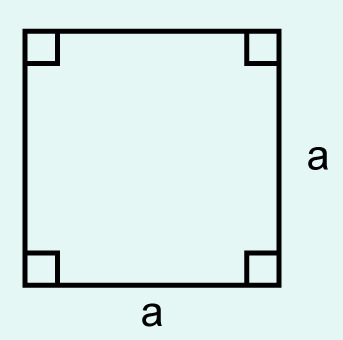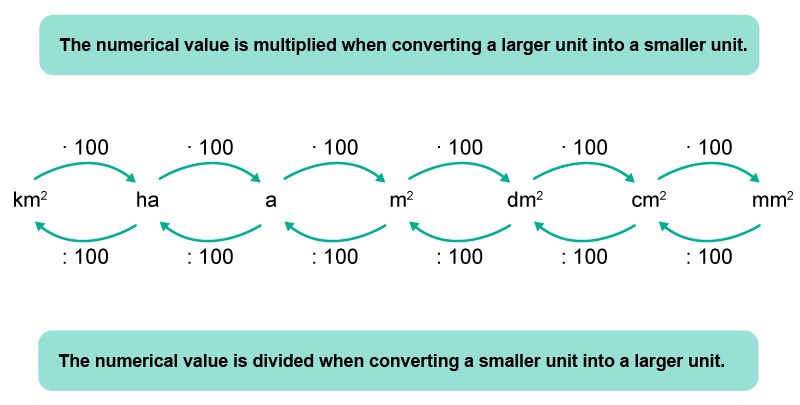12. Units of area
Exercises
Areas of rectangles and squares
Note! Since the altitude and the base of a rectangle converge, the area of the rectangle can also be calculated as the product of two adjacent sides.

The area of a square is the product of its base and altitude, i.e. the product of two adjacent sides:
[[$A = a \cdot a = a^2$]]
Note! The base and altitude of the square are equal in length.
Example 1
Calculate the area of the tatami mat.

The mat is a rectangle, which means that
[[$ A = a\cdot h = \text{180.0 cm} \cdot \text{90.0 cm} = 16 200 \text{ cm}^2 $]]
The value of 16200 is quite big, so it would be more illustrative to give an answer using a bigger area unit. How do you convert 16200 cm2 to square metres?
Units of area
Since the ratio for units of length in the SI system is ten, the ratio for units of area [[$ \text{m}^2 = \text{m} \cdot \text{m} $]] must be [[$10\cdot10 = 100$]]. The table shows the most common units of area.

[[$\begin{align} \text{3,2 km}^2 = 100 \cdot \text{3,2 ha} = \text{320 ha} && \text{Convert to one unit smaller.} \end{align}$]]
b) [[$ 16200 $]] square centimetres to square metres.
[[$\begin{align} 16200 \text{ cm}^2 = \dfrac{16200}{100 \cdot 100} \text{ m}^2 = \text{1,62 m}^2 && \text{Convert to two units greater.} \end{align}$]]
Like in length unit conversions, we can take advantage of the knowledge that the number notation system we use is decimal and has a base number of [[$10$]]. Since the area unit conversion ratio is [[$100$]], each unit conversion always moves the decimal point by two steps.
Example 3
Convert the areas a) [[$240$]] mm2 and b) [[$\text{3,2}$]] ha to square metres.

| Symbol | Name | In basic units |
|---|---|---|
| km2 | square kilometre | 1 000 000 m2 |
| ha | hectare | 10 000 m2 |
| a | are | 100 m2 |
| m2 | square metre | 1 m2 |
| dm2 | square decimetre | 0,01 m2 |
| cm2 | square centimetre | 0,0001 m2 |
| mm2 | square millimetre | 0,000001 m2 |
As with lengths, a smaller unit can be converted into a larger one by dividing its numerical value by the ratio. Conversely, a larger unit can be converted into a smaller unit by multiplying its numerical value by the ratio.

Example 2
Convert:
a) [[$ \text{3,2} $]] square kilometres to hectares.[[$\begin{align} \text{3,2 km}^2 = 100 \cdot \text{3,2 ha} = \text{320 ha} && \text{Convert to one unit smaller.} \end{align}$]]
b) [[$ 16200 $]] square centimetres to square metres.
[[$\begin{align} 16200 \text{ cm}^2 = \dfrac{16200}{100 \cdot 100} \text{ m}^2 = \text{1,62 m}^2 && \text{Convert to two units greater.} \end{align}$]]
Like in length unit conversions, we can take advantage of the knowledge that the number notation system we use is decimal and has a base number of [[$10$]]. Since the area unit conversion ratio is [[$100$]], each unit conversion always moves the decimal point by two steps.
Example 3
Convert the areas a) [[$240$]] mm2 and b) [[$\text{3,2}$]] ha to square metres.
